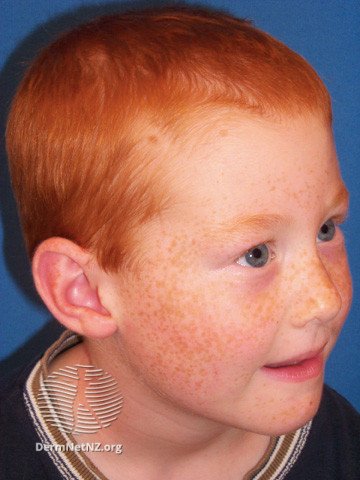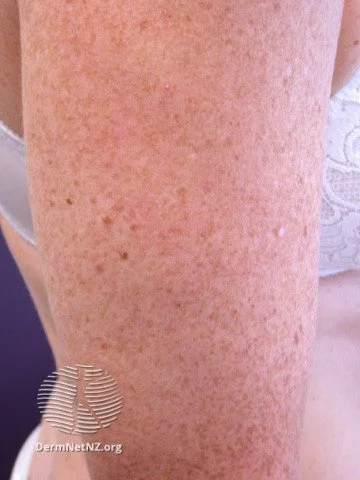
Freckles (Ephelides)
What are freckles (ephelides)?
Freckles, scientifically termed as ephelides, are small, light brown to reddish-brown spots that typically appear on sun-exposed areas of the skin. These flat spots are derived from a heightened production of melanin pigment and not due to an increased number of pigment-producing cells (melanocytes). Although similar in appearance, they are different from moles (nevi) and lentigines.
What causes freckles (ephelides)?
The primary factor contributing to freckles is:
Genetics: Individuals with light skin and eyes have a genetic predisposition to developing freckles.
Environmental triggers include:
Sun exposure: UV rays stimulate melanocytes to produce more melanin.
Tanning beds: Just like natural sunlight, they emit UV rays that can prompt freckle formation.
What are the symptoms of freckles (ephelides)?
Freckles present as tiny, uniform, light to dark brown spots. They're most frequently observed on sun-exposed areas such as the face, back of hands, chest, and shoulders. While they intensify in color during summer months due to sun exposure, they may fade or disappear during the winter.
How do I treat freckles (ephelides)?
While freckles are harmless and don't necessitate treatment, some might opt for cosmetic procedures to reduce their appearance. Available treatment options include:
Bleaching or fading creams: Products containing hydroquinone or kojic acid.
Topical Retinoids: Products like tretinoin can help lighten freckles when used consistently over time.
Chemical peels: These can help lighten freckles by exfoliating the top layers of skin.
Cryotherapy: A quick freeze using liquid nitrogen can be used to treat some types of freckles.
Laser treatment: Targets the melanin pigment without damaging the skin's surface.
How do I prevent freckles (ephelides)?
Prevention mainly focuses on minimizing sun exposure, which can be achieved through:
Consistent application of a broad-spectrum sunscreen with an SPF of at least 30.
Wearing protective clothing like wide-brimmed hats, long-sleeved shirts, and pants.
Avoiding peak sunlight hours, typically from 10 a.m. to 4 p.m.
Steering clear of tanning beds.
Freckles get lighter in the winter and darker in the summer; moles stay the same color all year round.
Credit: DermNet NZ


